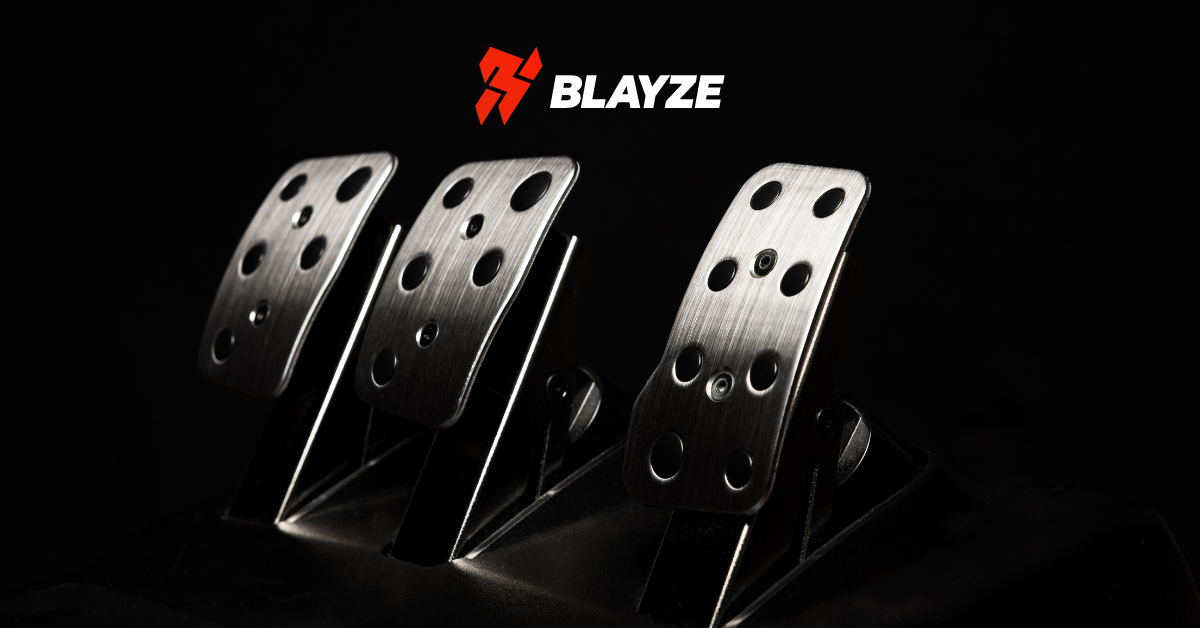
Blayze is a leading platform providing personalized coaching and educational resources for motorsports enthusiasts. The company was founded in 2019 by professional race car driver and CEO Dion von Moltke, and Christopher Roberts, CTO of Blayze.
Blayze has now worked with thousands of drivers in multiple forms of motorsports: car racing, karting, and motorcycle racing. They have also expanded into traditional sports like soccer, basketball, football, and more.
More information about Blayze Car Racing coaching can be found here: Race Car Coaching.
“With a team of professional coaches and a commitment to individualized instruction, Blayze empowers drivers to enhance their racing skills, whether they’re chasing championships or aspiring to drive as safely and efficiently as possible on the track,” said von Moltke.
In the high-speed world of racecar driving, the art of braking can make the difference between winning or finishing near the tail end of the field.
Blayze recently published an article titled “The 5 Types of Braking Zones”. This forms one of the chapters in a comprehensive Braking Masterclass for Race Car Drivers, which can be reviewed here.
This is the latest installment of their expansive racing education series, which includes in-depth articles in several categories, including Driver Techniques, Racecraft, Data, Setup, Mental Training, Skills in 60, as well as an extensive library of Track Guides.
Blayze also features video courses, including “Josef Newgarden’s Champions Course”, recordings of Blayze’s famous Blayze+ personalized video-based instruction calls, as well as an extensive library of Webinars
The Blayze Braking Masterclass for Race Car Drivers includes the following 5 chapters:
Chapter 1: The Different Types of Braking Zones
The chapter introduces the concept that, before the nuances of perfecting braking techniques can be learned, it’s imperative to understand that not all corners are created equal. Depending on the type of corner, different braking techniques must be employed. This chapter dissects the five core ways racecar drivers manipulate their brakes:
1. Hard initial pressure with a smooth release: Ideal for high-speed corners like Turn 1 at Sebring and Turn 1 at Willow Springs.
2. Hard initial pressure with continued threshold braking and a smooth release. Best suited for corners with long straights, such as Turn 7 at Sebring, and Turn 12 at Circuit of the Americas.
3. Smooth ramp-up and smooth release: Perfect for sweeper-style corners like Turn 13 at Sebring and Turn 6 at Mid-Ohio.
4. The light brush and ease off: Appropriate for corners where maintaining platform balance is essential, such as Turn 4 at Laguna Seca, and the Kink at Road America.
5. Hard initial pressure with a quick release: Ideal for downforce cars tackling challenging corners like Turn 1 at Mid-Ohio and Turn 6 at Road Atlanta.
Racecar drivers must assess the corner type, entry speed, hand positioning, car balance, and track conditions to select the most effective braking technique.
Chapter 2: Trail Braking
In this chapter, Blayze redefines the term “trail braking” as “directional braking”, to emphasize its true purpose. They debunk the myths surrounding trail braking’s difficulty and propose a methodical approach to teaching it correctly. Understanding when to employ directional braking is crucial, and it primarily serves two purposes:
1. Directing the car: Directional braking helps rotate the car in hairpin-style corners, such as Turn 3 at Daytona and Turn 7 at Sebring.
2. Extending the braking zone: By carrying brakes past the turn-in point, drivers can brake deeper into the corner, enhancing their control and speed.
Trail braking should not be applied indiscriminately but reserved for situations where it genuinely benefits the driver’s control and performance.
Chapter 3: Building Up to Late Braking
Late braking is a critical factor in achieving decent lap times at many race tracks. To master late braking, drivers should follow a systematic and methodologic process that is clearly outlined in the masterclass.
Von Moltke demonstrates this in a video focusing on Turn 1 at VIR from his pole lap for Paul Miller Racing in an Audi R8 LMS.
Chapter 4: Different Braking Techniques For Different Cars
Recognizing that no two cars are the same, the Blayze masterclass acknowledges that braking techniques may vary slightly but fundamentally remain consistent across various vehicles. For the masterclass, Blayze categorizes cars into three main groups:
1. Low horsepower, no or low downforce
2. High horsepower, no or low downforce
3. Downforce cars
While the overall braking technique remains similar, slight adjustments are made for factors such as brake pressure and trail braking. It’s essential for drivers to adapt their braking style to their specific car type.
“The Blayze team is proud to have built the world’s pre-eminent race car driver coaching platform. The braking masterclass represents an example of the perfect companion to our online one-on-one individualized coaching service, Blayze+,” von Moltke said.
Blayze racecar coaches include Ricky Taylor (IMSA DPi Champion), Spencer Pigot (Indy and IMSA Car Driver), Oliver Askew (Indy Car podium finisher), Dion von Moltke (Winner of the IMSA Daytona 24 Hour), and many other professional drivers.
Blayze contact information is included on their website: https://blayze.io/.
Everise dba Blayze
[emailprotected]
+18319004405
6108 Bridlington Circle
COMTEX_439739835/2764/2023-09-07T22:53:18
Disclaimer: The views, suggestions, and opinions expressed here are the sole responsibility of the experts. No Smart Herald journalist was involved in the writing and production of this article.